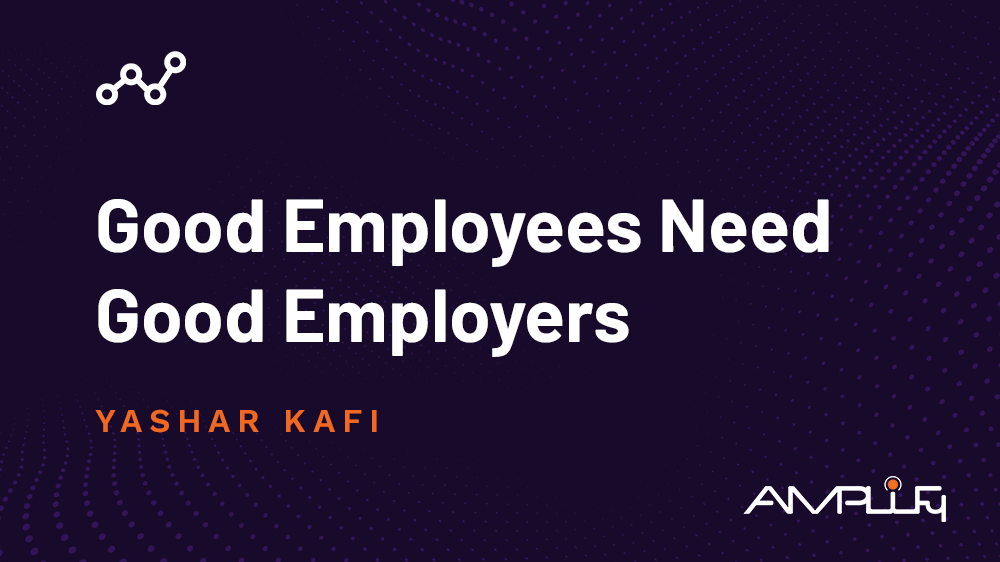Good Employees Need Good Employers
In a recent article for The New York Times, Simran Sethi brought together a panel of thought leaders and posed to them the following question: “What does it mean to be good?” Given the drastic differences between the respondents’ life experiences/occupations, each provided a different answer (as one might expect). However, despite these variations, there were a few common traits associated with being a good person that continued to surface: traits like kindness, integrity, responsibility and conscientiousness. We might add to this “Good Person” list, with a little help from Ronald E. Riggio at Psychology Today, the traits of prudence, temperance and fortitude.
After reading Sethi’s article, I considered my own question: “Do good employees possess similar qualities to good people?” And the answer I kept coming back to is “Yes.” For example, good employees are considered responsible, an attribute that is displayed in the workplace through reliable and consistent performance. Good employees also tend to be people of integrity—those who are honest as well as trustworthy. It goes without saying that organizations should be on the lookout for candidates who reflect these qualities; however, such individuals are not good employees simply because they are good people. The standard for being a good employee is, in fact, a higher bar to clear.
Because while being kind, empathetic, honest and respectful are important traits in the workplace, being a good employee also means displaying attributes that are directly related to one’s job. Take, for example,
the multi-faceted attributes of punctuality, efficiency, productivity and the ability to work well within a team. These qualities are not essential for good people, but they are important to the sorts of employees that organizations want to build their workforce around. Furthermore, in some industries, technical skills and expertise will be critical qualities to possess as opposed to great communication and interpersonal attributes in other industries. Ultimately, being a good employee requires a combination of skills and abilities that align with the position’s demands as well as employer expectations.
This is all to say: good people are not inherently good employees. While being a good person may be a prerequisite for being a good employee, we live in a world where good employees must be made. It is only
the potential for becoming a good employee that can be found in a stack of resumes or discovered at the end of a job search. Once that hire is made, the new employee becomes a good employee as a
byproduct of good leadership, which means they need good employers, as well.
Which brings us to the final question: “How can employers help good people become good employees?” The first step is to take responsibility for facilitating this change. Employees want to be better, but they need an organizational commitment and encouragement. The second step involves establishing clear expectations and guidelines to create an environment in which success can be measured and the gap between good people and good employees overcome. The last step is to help employees align their values with the values of the organization. By recognizing their organization’s overarching goals, employees can avoid working at cross purposes to their colleagues. This means that a shared vision is needed—and it falls to the employer to facilitate this understanding. The bottom line? Good people need good employers to become good employees.




